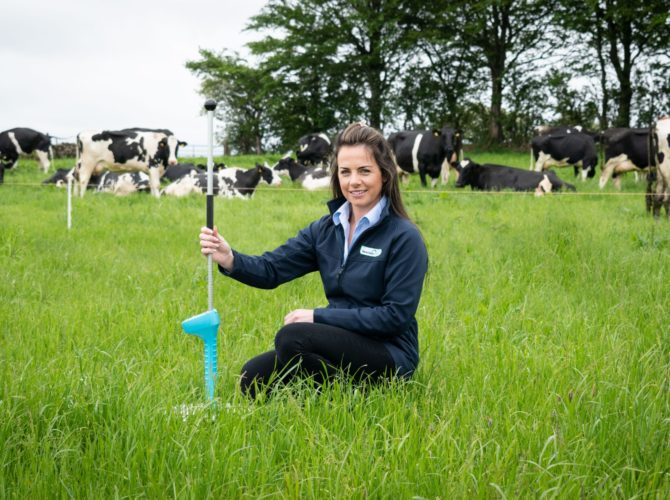Window of Opportunity to Maximise Milk from Grass
11th June 2021

Favourable weather conditions have resulted in accelerated grass growth in recent weeks. Laura McConnell, Ruminant Nutritionist with Fane Valley feeds, explains, “As grass growth reaches its seasonal peak, now is the perfect opportunity to maximise milk from grass.”
In a bid to help optimise grass utilisation, Fane Valley Feeds publishes a Grass Monitor, which can be a useful tool for managing grazing rotations more accurately. The Grass Monitor is updated weekly on Fane Valley Feeds’ Facebook page, and provides guidelines for predicted milk yield from grass, based on grass growth, quality and dry matter intakes. The Grass Monitor also provides feed to yield data for updating parlour software and assesses the risk factors for milk fat depression (MFD).
With a current growth rate of almost 100 kg DM/ha, Laura says, “Covers can quickly get ahead of cows. Walking the grazing platform weekly and measuring grass covers with a rising plate meter can help to identify a grass surplus. Ideally, this should be removed from the grass wedge to maintain grass quality and enable post-grazing residuals to be met. Grazing covers in excess of 3300 kg DM/ha will have a detrimental impact on milk production and grass utilisation.”
Laura continues, “Pre-mowing can improve dry matter intakes by up to 1.5kg DM/head/day and can help maintain target residuals, however it should not be used as a strategy to graze very heavy covers.”
Grass quality can vary greatly from farm to farm, as Laura explains, “When cows are turned out onto ideal covers with grass at the optimum three leaf stage, on farm analysis of fresh grass has demonstrated grass protein in excess of 20%.” In this scenario, supplementing with a 14 – 16% crude protein compound feed will help to reduce the excess dietary protein, positively affecting fertility and cow condition. Milk urea readings in excess of 35mg/dl can indicate an oversupply of dietary protein. Milk fat depression can be difficult to avoid entirely, especially with full time grazing herds. However, Laura adds “high grass sugar levels of 16% which are currently being witnessed on many farms are further compounding the risk of milk fat depression by increasing the rumen acid load. Including rumen buffers and yeast in the compound feed can help to stabilise rumen pH, improve fibre digestion and therefore help mitigate against milk fat drop.”
The Grass Monitor will assess the weekly risk factor for milk fat depression based on rumen acid load, fibre index and rumen unsaturated fatty acid load (RUFAL), providing management tips and strategies to help overcome these issues on farm.
For more information on grass management or assistance with keeping your feeding strategy correct, please follow our weekly Facebook Grass Monitor or contact Laura McConnell on 07976 723099.


